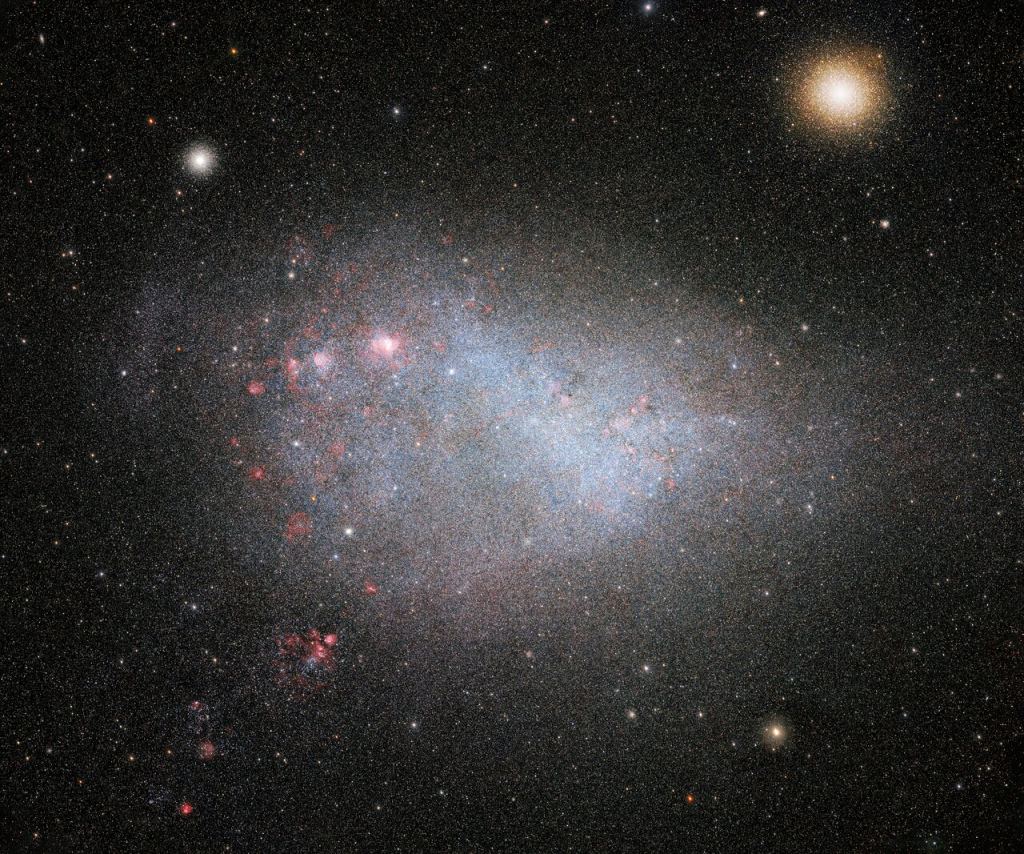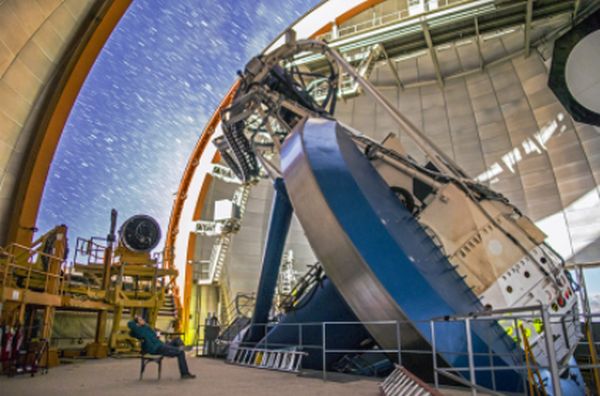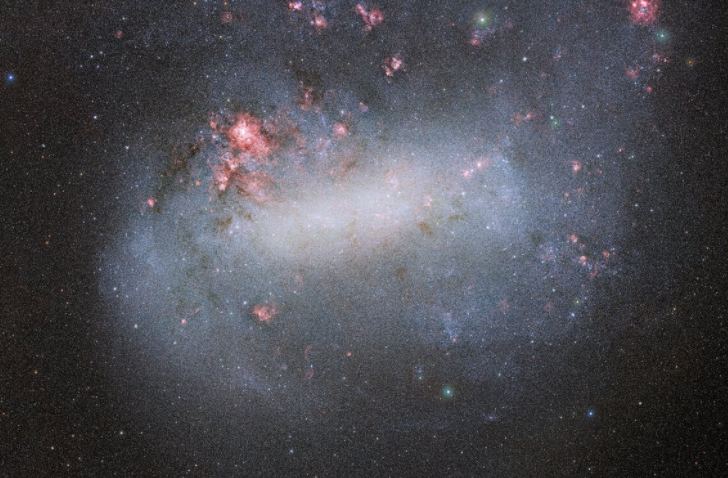The Magellanic Clouds are two of our closest neighbours, in galactic terms. The pair of irregular dwarf galaxies were drawn into the Milky Way’s orbit in the distant past, and we’ve been looking up at them since the dawn of humanity. Some of our ancestors even gathered pigments and created images of them in petroglyphs and cave paintings.
Following in the footsteps of those ancient artists, astronomers recently used the Dark Energy Camera (DECam) to capture an in-depth portrait of the pair of galaxies.
The Magellanic Clouds aren’t visible to inhabitants of the northern hemisphere, but they’re quite conspicuous in the southern hemisphere. Observers sometimes say they look like chunks of the Milky Way that have separated. But it’s the reverse that’s true: they’re separate structures born who knows where, and they’re slowly being drawn into our galaxy and consumed, starting with their gas halos.
The pair of galaxies have been observed in depth many times. But this new effort has produced the most detailed image of them ever. It’s all part of the effort to better understand how these two companions formed. The observations of the clouds contain about 4 million measurements of 360 million objects.

Acknowledgment: Image processing: Travis Rector (University of Alaska Anchorage), Mahdi Zamani & Davide de Martin
The Dark Energy Camera is located on the Víctor M. Blanco 4-meter Telescope at the Cerro Tololo Inter-American Observatory (CTIO) in Chile. The DECam is a 520-megapixel high-performance camera in operation since 2012. It was primarily designed as part of the Dark Energy Survey but also performs other science observations.
For this latest data release, DECam’s power was concentrated on the Magellanic Clouds, resulting in the deepest data-set yet of the two satellite galaxies. It’s all part of what’s called the SMASH survey, or Survey of the MAgellanic Stellar History.
“To date, this is the deepest and most extensive astronomical dataset of the Magellanic Clouds, which are the closest large galaxies to us,” explains David Nidever, Assistant Professor in the Physics Department at Montana State University and Principal Investigator of the SMASH survey. “These satellite galaxies have been studied for decades, but SMASH is being used to map out their structure over their full, enormous extent and help solve the mystery of their formation.”
Because the Magellanic Clouds are so close to us, they provide a great opportunity to study small galaxies and understand how they formed. In a 2017 paper announcing the first data release from SMASH, the authors wrote: “The Large and Small Magellanic Clouds (LMC and SMC), as two of the nearest and most massive satellite galaxies of the Milky Way (MW), offer a unique opportunity to study the processes of galaxy formation and evolution of low-mass galaxies in great detail. The Clouds have long held broad importance for astronomy, both as laboratories of astrophysical processes and as calibrators of the extragalactic distance scale. As the closest example of an interacting pair of galaxies, they provide special insight into the impact of such interactions on the structure and evolution of galaxies.”
But their proximity is both helpful and a challenge. The Universe contains a massive population of dwarf galaxies, and most of them are at extreme distances and appear only as tiny, dim objects. Compare that to the LMC and the SMC, which can be seen with the naked eye. Unfortunately, that also means that it’s difficult to image them completely and in detail. But DECam and SMASH are up to the task.

Altogether, SMASH covered an area of the sky that’s 2400 times greater than the full Moon, though it took over 50 nights of observations. The central regions of each cloud are the most complex, and this second data release contains new observations of both regions.
The Magellanic Clouds are unusual because they’re still forming new stars rapidly. They have fairly large populations of young stars. SMASH’s deep and detailed data-set is allowing astronomers to study their stellar populations more closely, in search of clues to their history. They’ve found evidence that the two clouds have collided in the past, and that the collision created the episode of intense star formation.
“These are beautiful multicolor images of the Milky Way’s nearest neighboring galaxies. Through the care the dedicated team has taken, they give us a remarkable view of the thirteen billion year history of star formation in these galaxies,” notes National Science Foundation program officer Glen Langston.
A press release announcing SMASH’s second data release outlines three scientific objectives:
- Use data on star formation to create a movie of how the galaxies evolved over time.
- Engage citizen scientists in the search for star clusters in both galaxies.
- Measure the metallicity of stars in the Clouds.
“These latest SMASH data of the central regions of the Magellanic Clouds, where most of the stars are found, are unique in their combined depth, breadth, and uniformity,” Knut Olsen, NOIRLab scientist and survey co-leader explains. “Besides producing amazing images, these data allow us to look into the past and reconstruct how the Magellanic Clouds formed their stars over time; with these ‘movies’ of star formation we can try to understand how and why these galaxies evolved.”
The data release will be presented in a new paper published in The Astronomical Journal. Its title is “The Second Data Release of the Survey of the MAgellanic Stellar History.”

